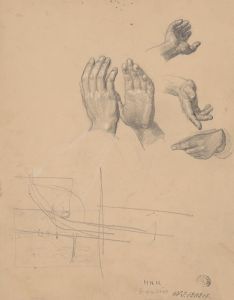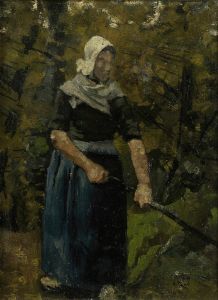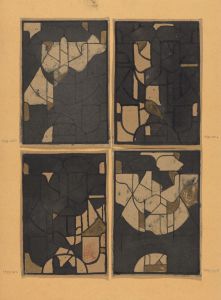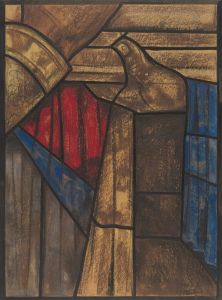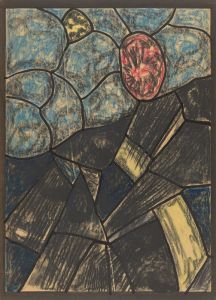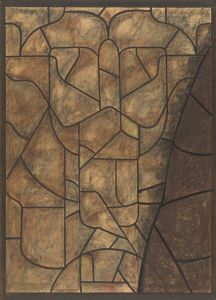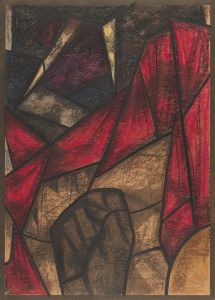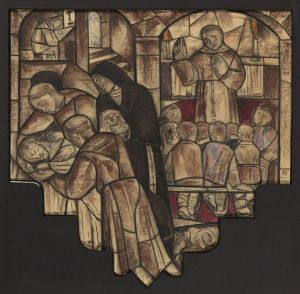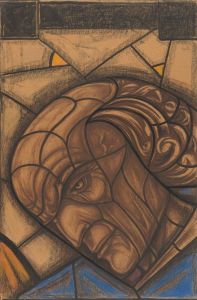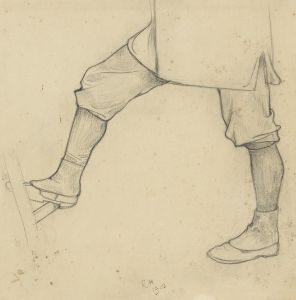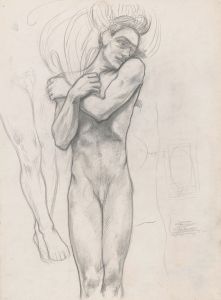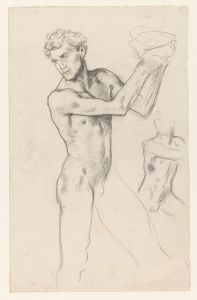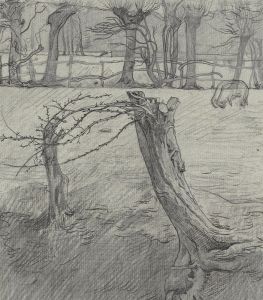
Ontwerp voor raam in het Noordertransept in de Dom te Utrecht 22
A hand-painted replica of Richard Nicolaüs Roland Holst’s masterpiece Ontwerp voor raam in het Noordertransept in de Dom te Utrecht 22, meticulously crafted by professional artists to capture the true essence of the original. Each piece is created with museum-quality canvas and rare mineral pigments, carefully painted by experienced artists with delicate brushstrokes and rich, layered colors to perfectly recreate the texture of the original artwork. Unlike machine-printed reproductions, this hand-painted version brings the painting to life, infused with the artist’s emotions and skill in every stroke. Whether for personal collection or home decoration, it instantly elevates the artistic atmosphere of any space.
Richard Nicolaüs Roland Holst was a prominent Dutch artist known for his contributions to the Arts and Crafts movement in the Netherlands. Born on December 4, 1868, in Amsterdam, Roland Holst was a versatile artist whose work spanned various mediums, including painting, drawing, and stained glass design. He was also a significant figure in the development of Dutch art in the late 19th and early 20th centuries.
One of his notable works is the design for a stained glass window titled "Ontwerp voor raam in het Noordertransept in de Dom te Utrecht 22." This work was created as part of a series of designs for the stained glass windows in the north transept of the Dom Church in Utrecht, a historic Gothic cathedral that has been a central religious site in the Netherlands for centuries. The Dom Church, also known as St. Martin's Cathedral, is renowned for its architectural beauty and historical significance.
Roland Holst's design for the stained glass window reflects his deep engagement with the Arts and Crafts movement, which emphasized traditional craftsmanship and the decorative arts. His work often incorporated symbolic and allegorical elements, drawing inspiration from medieval art and literature. This approach is evident in his stained glass designs, where he skillfully combined vibrant colors and intricate patterns to create visually striking and meaningful compositions.
The stained glass window designed by Roland Holst for the Dom Church is characterized by its rich use of color and detailed imagery. While specific details about the imagery in "Ontwerp voor raam in het Noordertransept in de Dom te Utrecht 22" are not extensively documented, Roland Holst's stained glass works typically feature religious and historical themes, often depicting saints, biblical scenes, or allegorical figures. His designs are known for their harmonious compositions and the way they interact with light, creating a dynamic visual experience for viewers.
Roland Holst's contribution to the Dom Church's stained glass windows is part of a broader effort in the late 19th and early 20th centuries to restore and enhance the cathedral's interior. This period saw a revival of interest in stained glass as an art form, with artists like Roland Holst playing a crucial role in revitalizing this traditional medium. His work in the Dom Church is a testament to his skill as a designer and his ability to integrate art with architecture.
Throughout his career, Richard Nicolaüs Roland Holst was highly regarded for his artistic vision and craftsmanship. He was a member of several influential art societies and played a key role in the development of modern Dutch art. His legacy continues to be celebrated in the Netherlands, where his contributions to stained glass design and other art forms are recognized as significant achievements in the country's cultural history.
In summary, Richard Nicolaüs Roland Holst's "Ontwerp voor raam in het Noordertransept in de Dom te Utrecht 22" is an exemplary work of stained glass design that reflects his mastery of the medium and his commitment to the principles of the Arts and Crafts movement. His work in the Dom Church remains an important part of the artistic and historical heritage of Utrecht, showcasing the enduring appeal of stained glass as a form of artistic expression.





